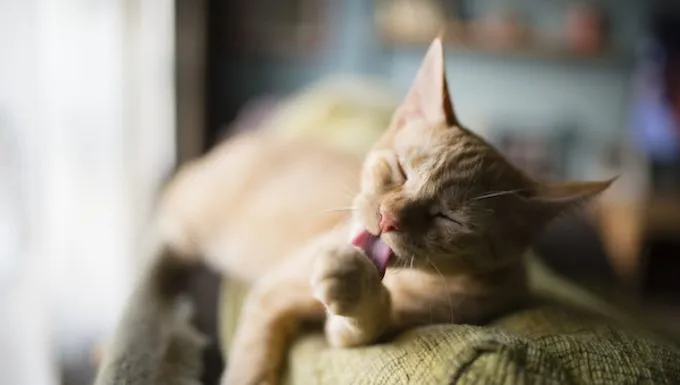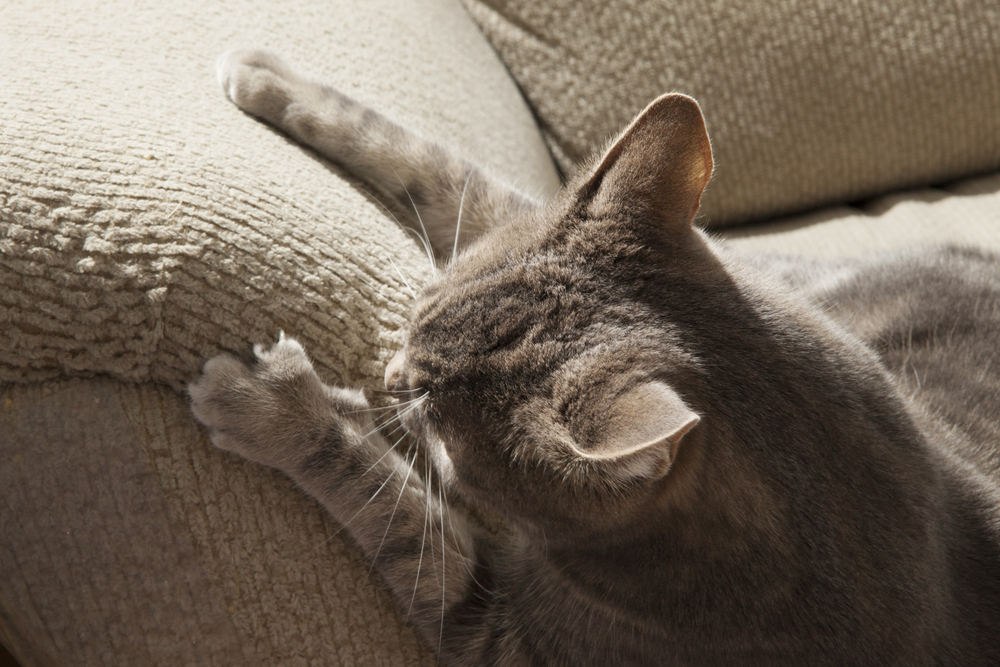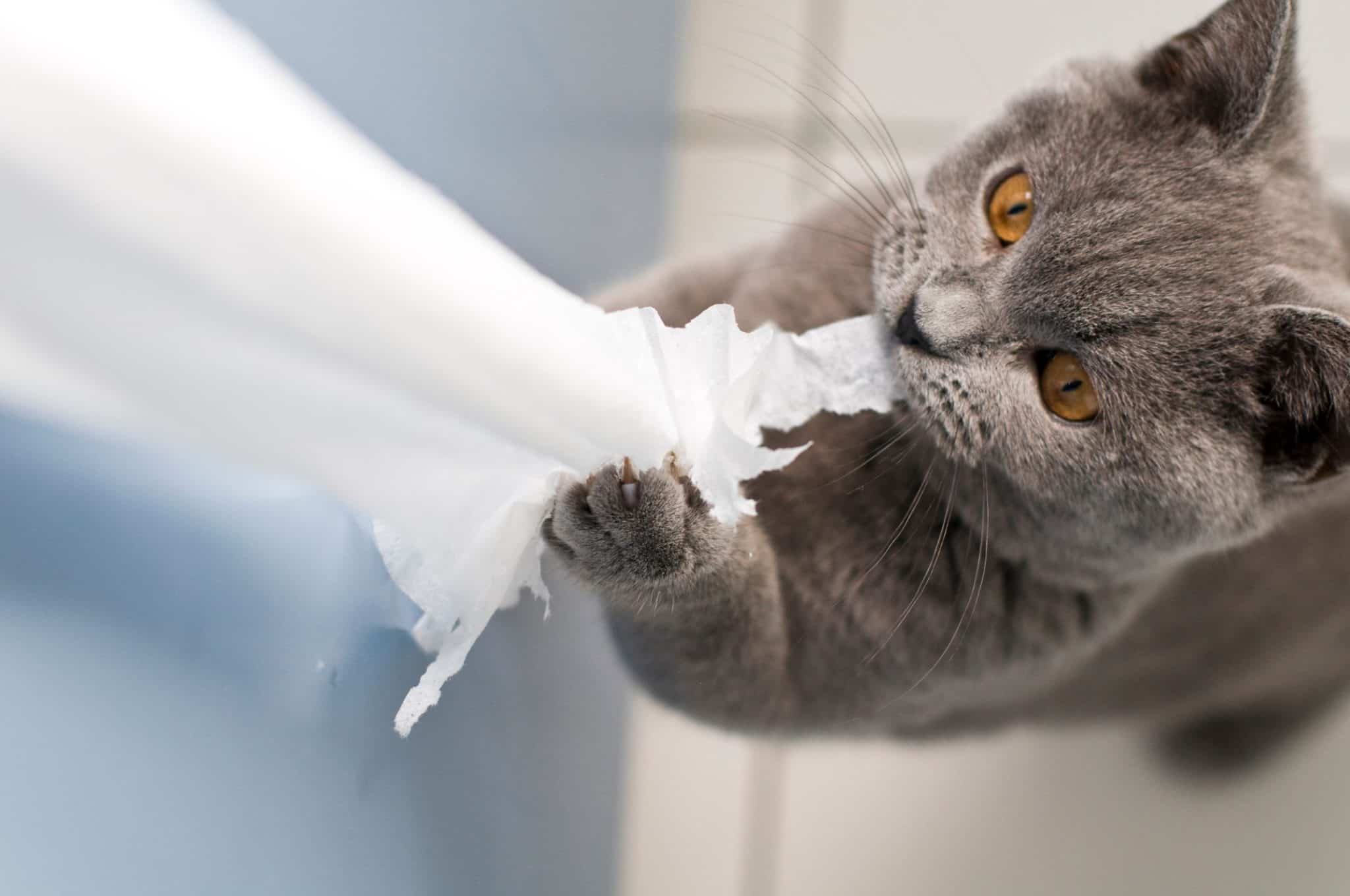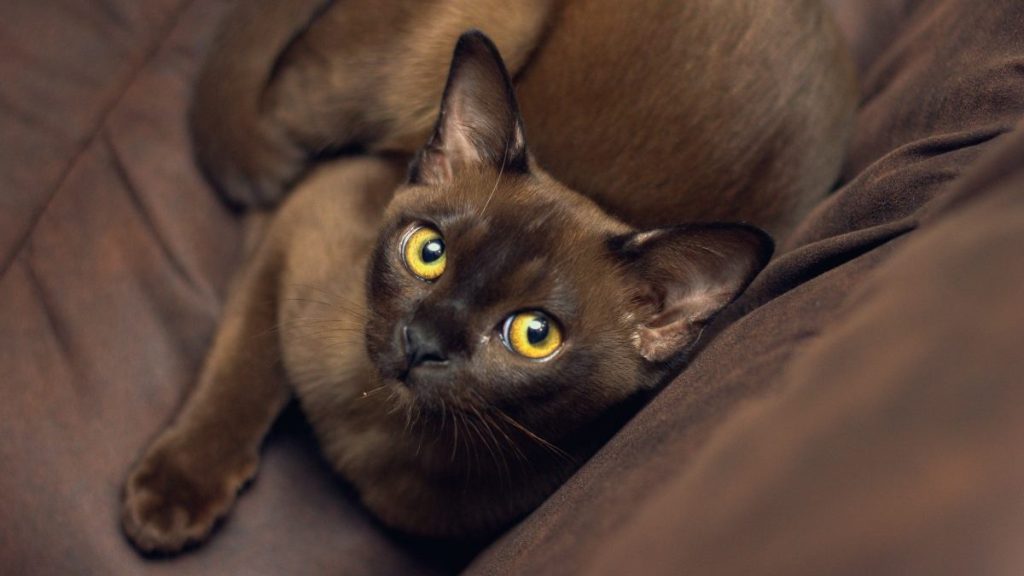Burmese Cat Lifespan: Factors Affecting Longevity
Genetics and Breed Characteristics

The lifespan of a Burmese cat is influenced by various factors, and understanding these can help determine how long one of these beautiful felines will live.
One of the primary factors affecting longevity in Burmese cats is genetics. As with any breed, the genetic makeup plays a significant role in determining its overall health and lifespan. Responsible breeding practices that focus on preserving the breed’s original characteristics while minimizing the risk of inherited diseases can significantly impact a cat’s lifespan.
Burmese cats are generally considered to be a robust and healthy breed, but like all living beings, they are prone to certain health issues. Some common conditions affecting Burmese cats include:
Polycystic kidney disease (PKD)
Hypertrophic cardiomyopathy (HCM)
Patellar luxation
Kneecap dislocation
Breeding programs that prioritize these health issues can help reduce the risk of a cat inheriting them. Additionally, keeping cats up to date with regular veterinary check-ups and preventative care can also contribute to their overall well-being.
Proper nutrition is another key factor in maintaining a healthy lifestyle for Burmese cats. A balanced diet that meets a cat’s nutritional needs can help support its immune system and reduce the risk of certain health issues. Feeding high-quality food, maintaining a healthy weight, and avoiding overfeeding or underfeeding are all essential considerations.
Genetics also play a role in determining a Burmese cat’s coat type and quality. A smooth, glossy coat is typical for this breed, but some cats may develop skin problems such as dandruff or irritation due to allergies or sensitivities. Regular grooming can help identify these issues early on.
The environment and living conditions also have an impact on a Burmese cat’s lifespan. Providing a safe and comfortable home with plenty of space for exercise and play can contribute to their overall health and well-being. Factors such as access to fresh water, regular litter box maintenance, and protection from potential hazards like toxins or extreme temperatures are all crucial.
Lastly, the level of care provided by an owner can significantly impact a cat’s lifespan. Regular veterinary check-ups, preventative care, and prompt treatment of health issues can all contribute to a long and healthy life for a Burmese cat. Providing love, attention, and proper care will help your feline companion live its best life.
The Burmese cat breed is known for its robust health and long lifespan.
The average lifespan of a Burmese cat is between 12 to 17 years, with some individuals living up to 20 years or more.
Factors affecting the longevity of Burmese cats include genetics, diet, exercise, and health conditions.
Genetics play a crucial role in determining an individual cat’s lifespan. Responsible breeding practices and genetic testing can help identify potential genetic disorders that may affect a cat’s lifespan.
Diet is also important for maintaining the overall health and longevity of Burmese cats. A balanced diet that meets a cat’s nutritional needs can help prevent obesity, which is a common health issue in many cat breeds.
Exercise is essential for maintaining a healthy weight and preventing chronic diseases such as heart disease and diabetes. Providing regular exercise opportunities through playtime and mental stimulation can help keep Burmese cats active and engaged.
Health conditions are another factor that can affect the lifespan of Burmese cats. Some breeds are prone to certain health issues, such as hypertrophic cardiomyopathy (a heart condition), hip dysplasia, and patellar luxation.
Regular veterinary check-ups and preventative care, including vaccinations and parasite control, can help prevent or detect these conditions early on, thus improving the lifespan of Burmese cats.
Burmese cats are known for their robust health and long lifespan. However, it’s essential to work with a reputable breeder who prioritizes responsible breeding practices and genetic testing to ensure that their kittens are healthy and well-suited for life as a pet.
Pedigree and Inbreeding Studies at the University of California, Davis
The lifespan of a Burmese cat can vary greatly depending on several factors. While they are generally considered to be a relatively long-lived breed, their average lifespan is around 12-15 years.
However, some studies have suggested that Burmese cats may live up to 18-20 years or more with proper care and attention to their health. Factors such as diet, lifestyle, and genetics can all impact an individual cat’s lifespan.
Pedigree is another factor that can affect the lifespan of a Burmese cat. While some research suggests that inbreeding can lead to healthier kittens and longer lifespans, other studies have found no correlation between inbreeding and longevity.
A 1990 study conducted at the University of California, Davis examined the effect of inbreeding on the lifespan of Burmese cats. The researchers analyzed data from 1,500 Burmese cats and found that there was no significant difference in lifespan between inbred and outbred animals.
However, a 2005 study published in the Journal of Feline Medicine and Surgery suggested that pedigree may have an impact on the lifespan of Burmese cats. The researchers examined data from over 4,000 Burmese cats and found that those with higher-quality pedigrees (i.e., more inbreeding) had longer lifespans than those with lower-quality pedigrees.
Despite these findings, it is essential to note that the relationship between pedigree and lifespan is complex and may be influenced by a range of other factors. More research is needed to fully understand the effects of inbreeding on Burmese cat longevity.
The University of California, Davis study also investigated the potential impact of genetic variation on lifespan. The researchers found that certain genetic variants were associated with longer lifespans in Burmese cats, while others were linked to shorter lifespans.
Understanding these factors is crucial for breeders and owners who want to maximize their cat’s lifespan and ensure they receive the best possible care throughout their life.
Overall, the lifespan of a Burmese cat can be influenced by a range of factors, including diet, lifestyle, genetics, and pedigree. While research suggests that some factors may have an impact on longevity, more study is needed to fully understand the complex interplay between these factors and how they affect individual cats.
Research on pedigree and inbreeding in cats has shown that careful breeding practices can minimize genetic disorders.
The lifespan of a Burmese cat is influenced by various factors, including genetics, nutrition, environment, and lifestyle. Generally, with proper care and attention, a well-bred Burmese cat can live for around 12 to 17 years, although some individuals have been known to reach ages of up to 20 years or more.
Genetics play a significant role in determining the lifespan of a Burmese cat. Research has shown that careful breeding practices can minimize genetic disorders and improve overall health. Responsible breeders prioritize selecting healthy parents with minimal risk of passing on inherited conditions to their offspring.
Nutrition is also crucial for maintaining a long and healthy life for Burmese cats. A balanced diet rich in essential nutrients, including vitamins, minerals, and proteins, can support optimal growth and development. Feeding a high-quality cat food that meets the nutritional needs of your Burmese cat will help ensure they live their best life.
Environmental factors, such as living conditions, climate, and access to healthcare, also impact the lifespan of a Burmese cat. Providing a safe, comfortable, and stimulating environment with regular veterinary check-ups can significantly contribute to a long and healthy life for your cat.
In terms of lifestyle, maintaining a healthy weight through regular exercise and monitoring food intake is essential for longevity in Burmese cats. Regular veterinary care, including vaccinations, parasite control, and health checks, will also help detect potential issues early on and prevent complications from arising.
Burmese Cat Lifespan: Average and Maximum Life Expectancy
Average Lifespan Based on the American Veterinary Medical Association

The lifespan of a Burmese cat can vary depending on several factors, including genetics, diet, lifestyle, and health conditions. On average, a healthy Burmese cat can live for around 12 to 17 years.
According to the American Veterinary Medical Association (AVMA), the average lifespan of a domestic cat is between 12 and 15 years. However, some cats have been known to live longer or shorter lives depending on their individual circumstances.
The maximum life expectancy of a Burmese cat can range from 20 to 25 years or more in some cases. Factors such as proper nutrition, regular veterinary care, a safe living environment, and a healthy lifestyle can all contribute to a long and healthy life for these cats.
Burmese cats that are kept indoors and receive regular veterinary check-ups tend to live longer than those that are allowed to roam freely outdoors or do not have access to regular medical care. Additionally, Burmese cats that are overweight or suffer from certain health conditions may also experience a shorter lifespan.
It is worth noting that genetics can play a significant role in determining the lifespan of a Burmese cat. Responsible breeding practices and genetic testing can help identify potential health issues and ensure that breeding programs prioritize the health and well-being of their cats.
In summary, while individual circumstances may vary, the average lifespan of a Burmese cat is around 12 to 17 years, with some individuals potentially living up to 20 to 25 years or more with proper care and attention. By providing regular veterinary care, a safe living environment, and a healthy lifestyle, owners can help their Burmese cats live long and happy lives.
The average lifespan of a Burmese cat is around 1216 years, with some living up to 18 years or more.
The average lifespan of a Burmese cat is around 12-16 years, which is relatively long compared to other domesticated breeds. However, with proper care and attention to health issues, some Burmese cats have been known to live up to 18 years or more.
There are several factors that contribute to the lifespan of a Burmese cat. Genetics play a significant role, as some lines of Burmese cats are bred for their longevity and overall health. Nutrition also plays a crucial part, as a balanced diet that meets a cat’s nutritional needs is essential for maintaining good health.
Regular veterinary care is also vital in ensuring the long-term health and well-being of a Burmese cat. Regular check-ups with a veterinarian can help identify any potential health issues early on, allowing for prompt treatment and management.
In addition to genetics, nutrition, and regular veterinary care, maintaining a healthy lifestyle is also important for extending the lifespan of a Burmese cat. This includes providing plenty of exercise and mental stimulation, as well as ensuring that a cat’s living environment is safe and stress-free.
Some common health issues that can affect Burmese cats include patellar luxation, hip dysplasia, and amyloidosis. These conditions can be managed with proper treatment and care, but it’s essential to be aware of them when considering bringing a Burmese cat into your family.
Overall, the lifespan of a Burmese cat is influenced by a combination of genetic, environmental, and lifestyle factors. By providing proper care and attention to health issues, you can help ensure that your Burmese cat lives a long and healthy life.
Factors Contributing to Burmese Cat Longevity: Nutrition and Lifestyle
Dietary Recommendations from the United States Department of Agriculture

Burmese cats are known for their long lifespan, with some individuals living up to 18 years or more. Several factors contribute to their longevity, including nutrition and lifestyle habits.
Nutrition plays a critical role in determining the overall health and well-being of Burmese cats. A balanced diet that meets their nutritional needs is essential for maintaining optimal health. The United States Department of Agriculture (USDA) provides guidelines on dietary recommendations for Burmese cats, which include:
– Providing high-quality protein sources, such as chicken or fish, to ensure they receive adequate amino acids.
– Including a mix of omega-3 and omega-6 fatty acids from sources like salmon oil or flaxseed oil to support heart health and reduce inflammation.
– Maintaining a balanced calcium-to-phosphorus ratio to promote strong bone growth and development.
– Ensuring adequate moisture levels in their diet, either through wet food or adding water to dry food, to prevent dehydration.
Adopting a healthy lifestyle is also crucial for extending the lifespan of Burmese cats. Regular exercise, such as playtime with toys or interactive games, helps maintain physical health and reduces obesity risk. Additionally, providing regular veterinary check-ups and staying up-to-date on preventative care measures, like vaccinations and parasite control, can help identify potential health issues early on.
Avoiding exposure to environmental stressors, such as changes in living situations or introducing new pets, can also contribute to a Burmese cat’s longevity. Providing a stable and predictable environment helps reduce stress levels and promotes overall well-being.
By following these nutrition and lifestyle recommendations from the USDA and prioritizing their health and well-being, Burmese cats can live long, happy, and healthy lives.
A highquality diet rich in protein and moderate in fat is essential for maintaining a healthy weight and overall wellbeing in Burmese cats.
The lifespan of a Burmese cat can be significantly influenced by various factors, with nutrition and lifestyle playing a crucial role. A high-quality diet rich in protein and moderate in fat is essential for maintaining a healthy weight and overall wellbeing in Burmese cats.
Protein-rich foods are vital for the growth and maintenance of muscles, bones, and other tissues in Burmese cats. Adequate protein intake also supports the immune system and helps to prevent diseases such as kidney disease and cancer.
Moderate fat intake is equally important, as it provides energy and aids in the absorption of essential vitamins and minerals. However, excessive fat consumption can lead to obesity, which is a common health problem among Burmese cats.
Besides nutrition, a healthy lifestyle also plays a critical role in extending the lifespan of Burmese cats. Regular exercise, such as playtime and walks, helps to maintain physical fitness and mental stimulation. It’s essential to provide opportunities for Burmese cats to engage in natural behaviors like hunting and climbing.
Additionally, regular veterinary check-ups are necessary to monitor the overall health of a Burmese cat and detect any potential health issues early on. Preventative care, such as vaccinations and parasite control, can also help prevent diseases and extend lifespan.
Adequate sleep and mental stimulation are also essential for maintaining the physical and emotional wellbeing of Burmese cats. A comfortable living environment that provides a sense of security and calmness is also crucial for their overall health and happiness.
Genetics, while not as easily controllable as nutrition and lifestyle factors, can also influence the lifespan of Burmese cats. Responsible breeding practices that prioritize the health and wellbeing of the cat are essential in producing long-lived and healthy Burmese cats.
In conclusion, the lifespan of a Burmese cat is influenced by various factors, with nutrition and lifestyle playing a significant role. By providing high-quality nutrition, engaging in regular exercise and mental stimulation, and ensuring adequate sleep and veterinary care, we can help extend the lifespan of these beautiful felines.
- Best Lusha Alternatives for 2025 - April 19, 2025
- Best Overloop Alternatives for 2025 - April 19, 2025
- Best Snov.io Alternatives for 2025 - April 18, 2025



